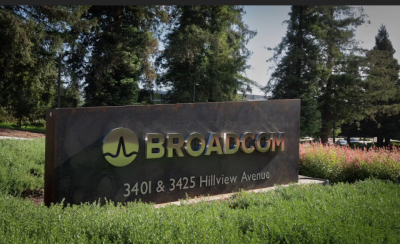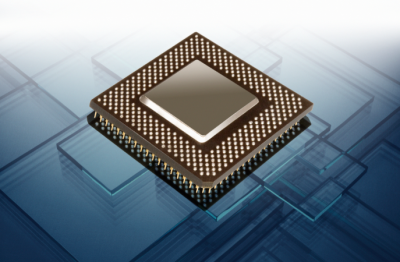EX3400 Ethernet Switch
Table 1: EX3400 PoE Power Budget
Total 10/100/1000BASE-T
Total 30 W PoE+ Ports That Can Be
Enabled
Total 15.4 W PoE Ports That Can Be
Enabled
Power Supply
Type
PoE+ Power Budget
(W)
SKU
Ports
EX3400-24P
EX3400-48P
24
24 ports up to 30W
48 ports up to 30W
24 ports up to 15.4W
48 ports up to 15.4W
AC
AC
370W/720W
740W/1440W
48
Security
Hop-by-hop encrypꢁon enables MACsec to secure communicaꢁons
while maintaining network intelligence. In addiꢁon, Ethernet-based
WAN networks can use MACsec to provide link security over long-
haul connecꢁons. MACsec is transparent to Layer 3 and higher-
layer protocols and is not limited to IP traffic—it works with any
type of wired or wireless traffic carried over Ethernet links.
The EX3400 switches fully interoperate with Juniper Networks
Access Policy Infrastructure, which consolidates all aspects of a
user’s idenꢁty, device, and locaꢁon, enabling administrators to
enforce access control and security down to the individual port or
user levels. Working as an enforcement point in the Access Policy
Infrastructure, the EX3400 provides both standards-based 802.1X
port-level access control and Layer 2-4 policy enforcement based
on user idenꢁty, locaꢁon, device, or a combinaꢁon of these. A
user’s idenꢁty, device type, machine posture check, and locaꢁon
can be used to not only grant or deny access but also to determine
the duraꢁon of access. If access is granted, the switch assigns the
user to a speciꢀc VLAN based on authorizaꢁon levels. The switch
can also apply QoS policies or mirror user traffic to a central
locaꢁon for logging, monitoring, or threat detecꢁon by an intrusion
prevenꢁon system (IPS).
Junos Operaꢁng System
The EX3400 switches run the same Junos OS that is used by other
Juniper Networks EX Series Ethernet Switches, QFX Series
Switches, Juniper Routers, Juniper SRX Firewalls, and the Juniper
NFX Series Network Services Plaꢄorm. By uꢁlizing a common
operaꢁng system, Juniper delivers a consistent implementaꢁon and
operaꢁon of control plane features across all products. To maintain
that consistency, Junos OS adheres to a highly disciplined
development process that uses a single source code and employs a
highly available modular architecture that prevents isolated failures
from bringing an enꢁre system down.
The EX3400 also provides a full complement of port security
features, including Dynamic Host Conꢀguraꢁon Protocol (DHCP)
snooping, dynamic ARP inspecꢁon (DAI), and media access control
(MAC) limiꢁng to defend against internal and external spooꢀng,
man-in-the-middle, and denial-of-service (DoS) aꢂacks.
These aꢂributes are fundamental to the core value of the soꢃware,
enabling all Junos OS-powered products to be updated
simultaneously with the same soꢃware release. All features are fully
regression tested, making each new release a true superset of the
previous version. Customers can deploy the soꢃware with
complete conꢀdence that all exisꢁng capabiliꢁes are maintained and
operate in the same way.
MACsec
EX3400 switches support IEEE 802.1ae MACsec, providing support
for link-layer data conꢀdenꢁality, data integrity, and data origin
authenꢁcaꢁon. The MACsec feature enables the EX3400 to
support 88 Gbps of near line-rate hardware-based traffic
encrypꢁon on all GbE and 10GbE ports.
Converged Environments
The EX3400 switches provide a flexible soluꢁon for demanding
converged data, voice, and video environments. The EX3400-24P
and EX3400-48P support PoE+, delivering up to 30 waꢂs of power
per port to support networked devices such as telephones, video
cameras, IEEE 802.11ac wireless LAN (WLAN) access points, and
videophones. The PoE+ standard provides nearly double the 15.4
waꢂs per port available with the IEEE 802.3af PoE standard.
Deꢀned by IEEE 802.1AE, MACsec provides secure, encrypted
communicaꢁon at the link layer that is capable of idenꢁfying and
prevenꢁng threats from DoS and intrusion aꢂacks, as well as man-
in-the-middle, masquerading, passive wiretapping, and playback
aꢂacks launched from behind the ꢀrewall. When MACsec is
deployed on switch ports, all traffic is encrypted on the wire but
traffic inside the switch is not. This allows the switch to apply all
network policies such as QoS, deep packet inspecꢁon, and sFlow to
each packet without compromising the security of packets on the
wire.
4











 日本芯片代工厂JS Foundry濒临破产 激进扩张致负债161亿日元
日本芯片代工厂JS Foundry濒临破产 激进扩张致负债161亿日元

 LG电子进军HBM制造关键领域 混合键合设备研发瞄准2028年量产
LG电子进军HBM制造关键领域 混合键合设备研发瞄准2028年量产

 博通10亿美元半导体工厂计划搁浅 西班牙谈判破裂背后暗藏政治变局
博通10亿美元半导体工厂计划搁浅 西班牙谈判破裂背后暗藏政治变局

 英特尔联手台积电2nm工艺 Nova Lake芯片流片完成引爆业界期待
英特尔联手台积电2nm工艺 Nova Lake芯片流片完成引爆业界期待
